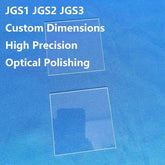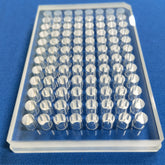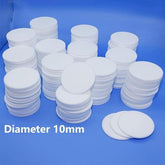The outstanding performance of sapphire in mobile phone panels and the development of its preparation technology
1. The superior properties of sapphire
The outstanding physical and chemical properties of sapphire glass have led to its significant adoption in the field of mobile phone manufacturing, where it is widely used to replace traditional glass as the covering material for mobile phone panels. Its high hardness, wear resistance, chemical stability and heat resistance make it an ideal material for use in mobile phone panels. The outstanding physical and chemical properties of sapphire glass, including its high hardness, wear resistance, chemical stability and thermal stability, make it a highly suitable material for use in mobile phone panels.
Sapphire’s Mohs hardness rating is 9, which is higher than that of standard glass, and its wear resistance is twice that of the current multi-purpose mobile phone panel glass. Additionally, it boasts an exceptional gloss. Sapphire glass is already being used to cover the camera lens and the main function keys. The aim is to enhance the hardness and wear resistance of the phone panel, protecting the shooting and fingerprint recognition functions from surface scratches.

It should be noted that the term “sapphire glass” is not accurate, as the material used is actually sapphire crystal rather than glass. Some individuals refer to it as sapphire crystal glass, which may create the impression that it is a type of crystal glass with a sapphire hue.
Sapphire, a type of corundum crystal, has a Mohs hardness rating of 9, which is significantly higher than the 6 to 7 range typically seen in normal glass. Its exceptional wear resistance and durability are twice those of the well-known Gorilla glass for mobile phone panels, and its gloss quality is also superior. In addition, sapphire also has outstanding chemical stability and thermal stability.
While sapphire’s exceptional properties make it a strong contender for use in mobile phone panels, there are also challenges to be addressed. The manufacturing process of large-sized sapphire mobile phone screens is complex, which results in relatively high manufacturing costs, almost ten times that of ordinary glass panels. However, with the large-scale production of sapphire, the cost is expected to be significantly reduced.

2. Preparation technology of large-sized sapphires
Natural sapphires are a rare and valuable resource, which makes them challenging to produce in large quantities for industrial use. Since the research on the artificial preparation of sapphire was initiated in 1902, significant progress has been made, but most of it is still limited to small-sized crystals. However, significant advances have been made in the production of large-sized sapphires in recent years.
At present, there are a number of methods available for the preparation of sapphire. The following are the primary techniques for producing large-sized sapphire: the kyropoulos method, the heat exchange method, the temperature gradient technique and the cold core shoulder micro-lifting method, which is an enhanced version of the kyropoulos method. Each method has its own advantages, but the most widely used techniques are the heat exchange method, the kyropoulos method and the distinctive cold core shoulder micro-lifting method.






